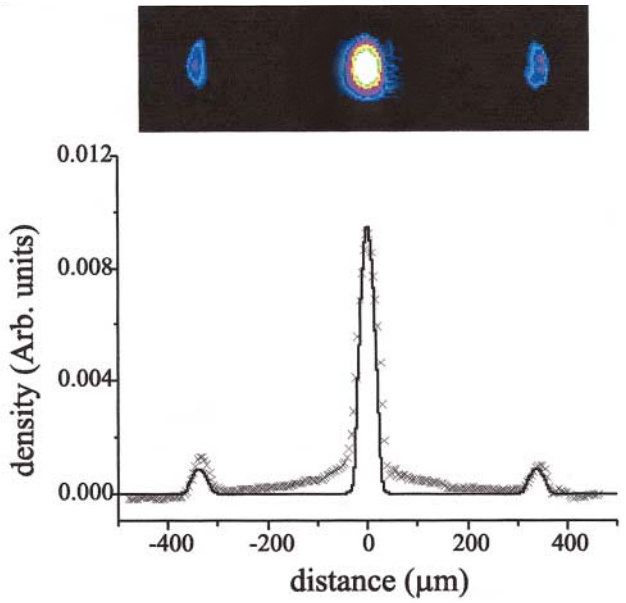 |
We investigate the properties of a coherent array containing about 200 Bose-Einstein condensates produced in a far detuned 1D optical lattice. The density profile of the gas, imaged after releasing the trap, provides information about the coherence of the ground-state wave function. The measured atomic distribution is characterized by interference peaks. The time evolution of the peaks, their relative population, as well as the radial size of the expanding cloud are in good agreement with the predictions of theory. P. Pedri et al. |


In June 10th 1999, the Rubidium BEC1 apparatus produced the first italian Bose-Einstein condensate. We soon focused our activity on the study of a quantum gas of 87Rb bosons in optical lattices, investigating static and dynamic properties and enlightening the role of different kinds of instabilities. The last part of the activity was concentrated on the study of the superfluid to Mott insulator transition (also adding disorder and “quasi-disorder”) and on the physics of low-dimensional bosonic gases, characterized by measuring the excitation spectrum of these systems through inelastic light scattering. The BEC1 experiment retired in 2014 after 15 years of activity. We would like to thank all the people – students, technicians, and researchers – who have contributed to these exciting fifteen years of activity.
